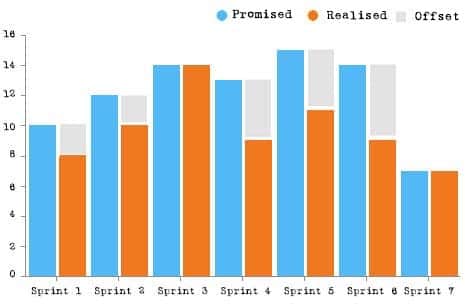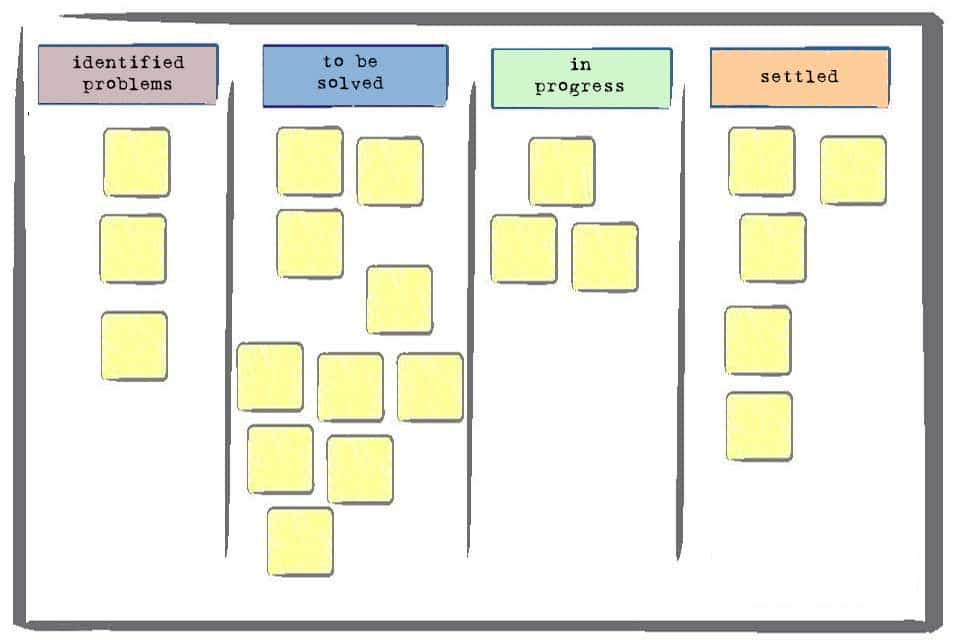What is a Velocity Offset?
Smartpedia: The velocity offset is the sum of the planned but not realised story points per sprint. It is the value for the deviation from plan and implementation.
Difference between the promised and realised story points
Velocity expresses the average speed of a development team. Even though it is not mentioned as a term in the current Scrum Guide, it is used in many organisations for working in sprints. It is calculated as the sum of the realised story points per sprint, divided by the number of sprints. The velocity offset is the sum of the planned but not realised story points per sprint. It is a measure of the deviation between planning and execution. With the help of the velocity chart, the velocity offset can be easily displayed.
- the Scrum Team was too optimistic.
- the developers overlooked a technical context.
- absences, holidays or illnesses were overlooked.
- there were impediments that prevented the team from working.
- the Product Owner has planned more user stories against better knowledge and the Scrum Master or the developers allowed this.
- there were unpredictable events such as short-term bug fixes that had a higher priority.
The calculation of velocity and velocity offset is often performed by the development team or, if required, by the Scrum Master.
Sometimes you can also read about a velocity offset factor that should be taken into account during sprint planning. This does not add any value to the planning because the velocity itself is already the measure of the average speed of the development team and thus the basis for the next sprint.
Agile methods should bring speed to slow organisations. Why is this statement misleading?
If you like the article or would like to discuss it, please feel free to share it in your network. And if you have any comments, please do not hesitate to send us a message.
Here you will find an article about the velocity trap.
And here you will find additional information from our Smartpedia section:



